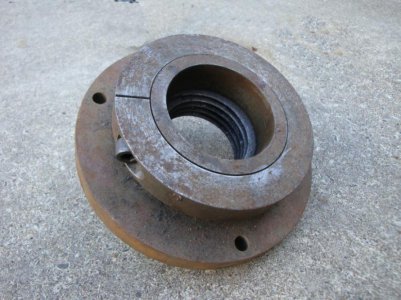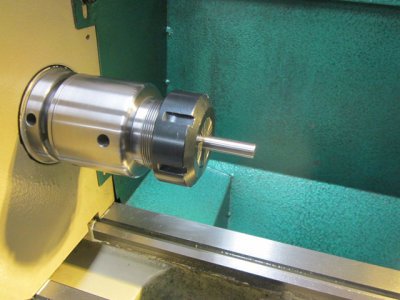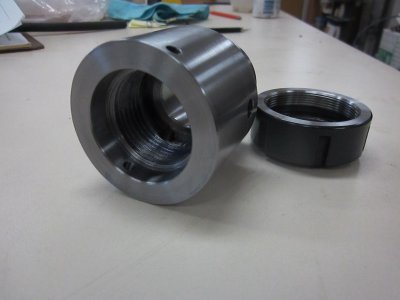How are you engaging the half nuts, are you leaving them engaged or dropping them and using the thread dial.
If you are leaving them engaged you will have the same possibility of problems when you return to the start of the thread.
If you are using the threading dial there will not be a problem.
How long is the spindle thread on the lathe, you would only need 4 to 5 threads in your nut to engage on your lathe spindle.
I make collet nuts for Hercus lathe that are 1 1/2"x8 tpi.
The overall length of the spindle thread is about 1.130", is undercut the rear of the nut to a length of .500",this provides plenty of run off clearance for the threading tool and sufficient amount of threads for the spindle.
If you thread at a low rpm you will be able to easily hear when the tool has stopped cutting and cleared the end of the job.
If you are leaving them engaged you will have the same possibility of problems when you return to the start of the thread.
If you are using the threading dial there will not be a problem.
How long is the spindle thread on the lathe, you would only need 4 to 5 threads in your nut to engage on your lathe spindle.
I make collet nuts for Hercus lathe that are 1 1/2"x8 tpi.
The overall length of the spindle thread is about 1.130", is undercut the rear of the nut to a length of .500",this provides plenty of run off clearance for the threading tool and sufficient amount of threads for the spindle.
If you thread at a low rpm you will be able to easily hear when the tool has stopped cutting and cleared the end of the job.




